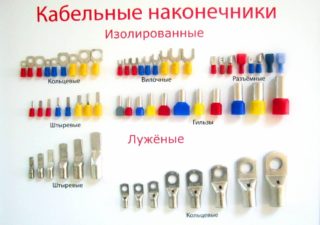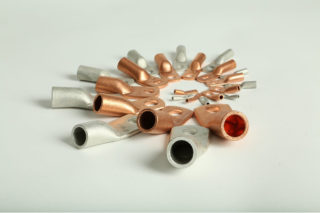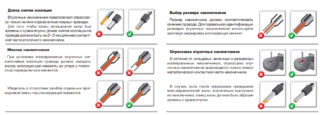In order for electrical appliances to work smoothly and continuously, it is important to ensure reliable contact and a snug fit of the cable to the electrical network. For this purpose, special wire lugs are used for crimping. For high-quality performance of work, you need to familiarize yourself with the features of the event and prepare a special tool.
Purpose and scope
The main task of the lugs is to provide reliable contact between several conductors, the bus and the wire, as well as the clamp and the wire. They are also used to simplify installation work related to electrical equipment when performing any technological operations.
Cable lugs serve as a qualitative analogue of various twists and all types of home-made connections, which are still very common. This inexpensive and easy-to-use device serves as a guarantee of high-quality fixing of the wire inside the sleeve.
Wire ferrule marking
Product labeling differs depending on the manufacturer who specializes in the production of tips. Some of them prefer full alphanumeric labeling, while others use only numerical values.
Marking and design features depend on the standard on the basis of which it was made. The most popular and widespread are domestic and European standards such as GOST 23981-80, TU and din.
Letter designations:
- Types of tips: sleeve - G, annular - K, tubular - T, pin - W.
- Design: split - P, father - P, mother - M.
- Additional equipment vinyl insulation: a combination of VI or B.
The digital designation includes the cross section and the area of the lug, the diameter of the hole intended for connection to the cable core. It may also contain information about the size of the bolt hole.
Execution options
 Depending on the design features, lugs for wires for crimping can be divided into single and double. Visually, the part is a tube made of copper and processed according to the galvanic method. One end of the part can be equipped with flaring, this is necessary when working with wires consisting of a large number of small wires. Insulation - cuff made of polyamide.
Depending on the design features, lugs for wires for crimping can be divided into single and double. Visually, the part is a tube made of copper and processed according to the galvanic method. One end of the part can be equipped with flaring, this is necessary when working with wires consisting of a large number of small wires. Insulation - cuff made of polyamide.
By design, the tips are divided into screw and requiring crimping. The peculiarity of the first is that the cable is clamped with bolts. Use the second variety is preferable if you have to work with single-core wires. At home and in everyday life, the second option is more often used, since they are also suitable for a flexible multicore cable.
Also, the parts are divided into several types depending on the connection method: angular, fork and straight, ring, sleeve.
Selection of tips for crimping wires
 When choosing an electrical component, you need to focus on the material of manufacture, the cross-section and flexibility of the cable used, as well as the method of connection to household appliances and other electrical devices.
When choosing an electrical component, you need to focus on the material of manufacture, the cross-section and flexibility of the cable used, as well as the method of connection to household appliances and other electrical devices.
- One of the most important aspects is the cable section. If it is larger than the diameter of the tip hole, the cable simply will not enter the sleeve; if less, the connection will not be tight.
- Ways to connect to equipment may also vary.The electrical component must be used if direct connection is not possible.
In order for the connection to turn out to be of high quality, the flexibility of the tips should be considered.
Basic crimping rules
In order to perform a high-quality crimping of wires using ferrules, it is important to observe the following rules and recommendations:
- Correctly select the electrical part.
- Carefully strip the wires.
- For high-quality crimping use special equipment.
- Choose the right matrix.
An important factor on which the outcome depends is strict adherence to the sequence of actions during crimping.
In order not to damage the connecting elements, you must additionally set the diameter on the press tongs.
Tips pin NShVI
NShVI is a pin-type electrical installation parts of a sleeve type. They are made of electrolytic copper, the back side is covered with insulating material. The material is processed using tin plating.
In industry and domestic conditions, such parts are used for crimping cables with a cross section of at least 0.25 mm2. Compared to analogs, this type of structure has many advantages, the main of which is a significant saving of time that is spent on crimping.
The crimping of a stranded wire NSHVI is as follows:
- Analyze the cross-sectional area of the wire and select the correct brand of tip. It is important that the veins enter freely from the side of the skirt.
- Sleeves are recommended to be purchased with a small margin. For example, a wire of 1.25 mm should be crimped with a sleeve of 1.5 mm.sq., and the cross-section of the skirt will be no more than 2.5 mm.sq.
For high-quality performance of work it is recommended to use special press tongs or hydraulic tongs, tools of the PK1 or PK1M brand.
Tips are used not only for the correct and continuous operation of electrical appliances, but also for the purpose of safety. Insecure connections can cause a short circuit and fire, which will cause great damage to health and property.






